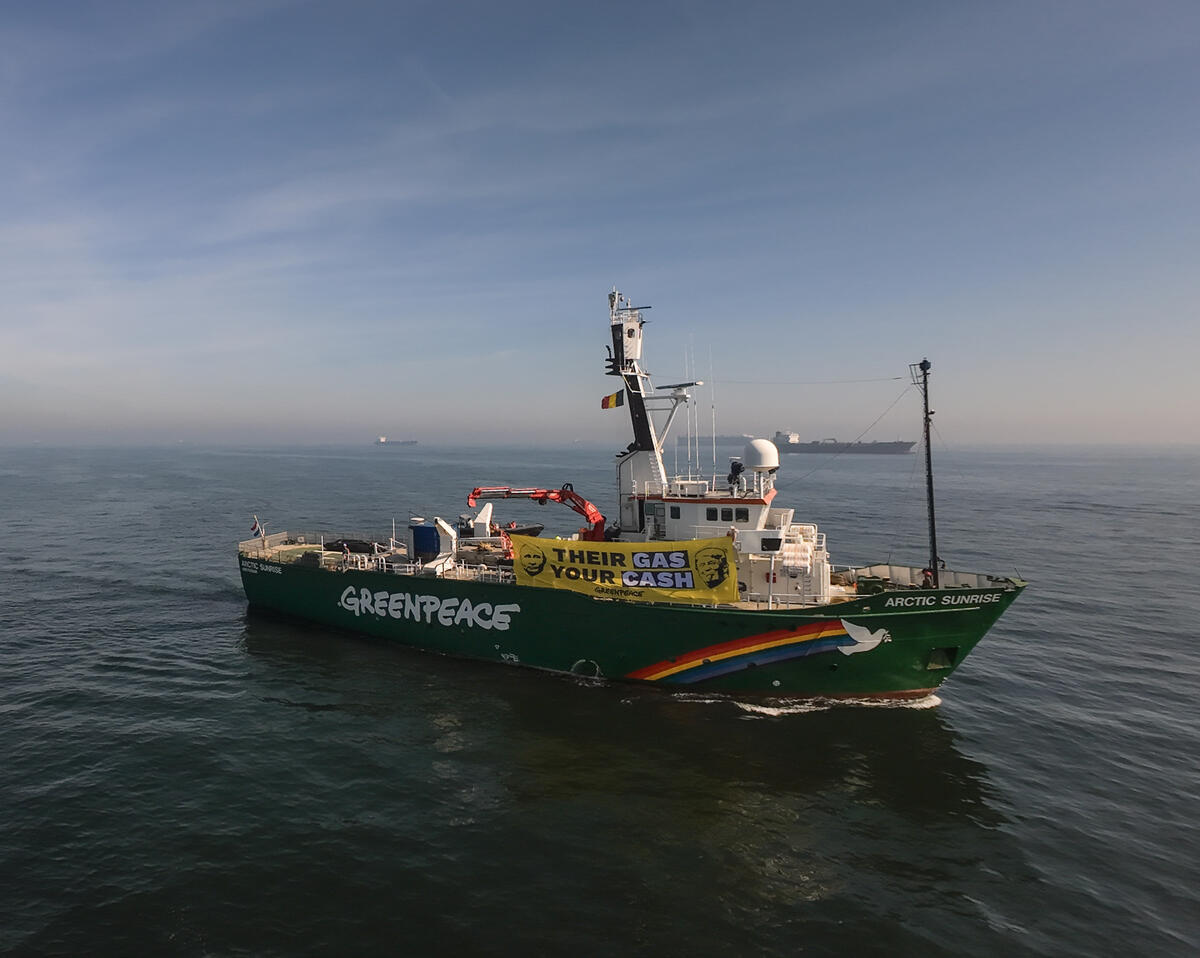Kyiv, Ukraine – A Greenpeace Germany investigation team working with Ukrainian scientists at Chornobyl has found radiation levels in areas where Russian military operations occurred to be at least three times higher than the estimation by the International Atomic Energy Agency (IAEA).[1] In April 2022, the IAEA provided very limited data with assurances that radiation levels were “normal” and not a major environmental or public safety issue.[2]
The investigation team in Chornobyl also documented that Russian military actions against essential laboratories, databases and radiation monitoring systems have caused severe damage to the scientific infrastructure that was developed with the international scientific community. This includes damage to the lab equipment needed to study the impact of radiation on people and the environment, which threatens the safety of current and future generations.
Shaun Burnie, senior nuclear specialist at Greenpeace Germany said:
“Understanding the complex radiation effects at Chornobyl is essential for the world and that means conducting research and working with international scientists. All of that has been put at risk by Russia’s war against Ukraine. Scientists and workers conducting essential radiation hazard monitoring are now threatened by an unknown number of Russian landmines and anti-personnel explosives. This is one further outrageous legacy of Russia’s illegal war and is a crime against the environment and global science. The IAEA appears reluctant to explain the scale of the radiation hazards at Chornobyl and the impact of the Russian occupation.”
Greenpeace Germany is concerned that the IAEA is severely compromised in its role on nuclear safety and security in Ukraine by its ties to Russia’s nuclear state agency, ROSATOM, including its current IAEA Deputy Director Mikhail Chudakov, a long term ROSATOM official.
Jan Vande Putte, lead radiation specialist at Greenpeace Belgium who also participated in the investigation said:
“We measured levels of gamma radiation inside the abandoned Russian trenches that qualify it as low-level nuclear waste. Clearly the Russian military was operating in a highly radioactive environment, but that’s not what the IAEA is communicating. We can only conclude that the IAEA for some reason decided not to make an effort to fully investigate. It’s clear from our survey that there is nothing normal about the radiation levels inside the Chornobyl Exclusion Zone, despite what the IAEA wants the world to believe.”
Essential to Greenpeace Germany’s investigation was a satellite analysis report commissioned from UK based McKenzie Intelligence Services (MIS) which showed the location of Russian military operations during February and March 2022. Expert military analysis of multispectral imagery from the Sentinel 2 constellation satellite and NASA’s Visible Infrared Imaging Radiometer Suite identified fires in the exclusion zone which McKenzie concluded was set deliberately by the Russian military.[3]
ENDS
Photo and video available in the Greenpeace Media Library
Notes
[1] The Greenpeace Germany research was conducted with the approval of the Ukrainian government and in cooperation with scientists from the State Agency of Ukraine on the Exclusion Zone Management (SAUEZM). Greenpeace Germany released the results of its investigation at a press conference in Kyiv on 20 July, also attended by the Yevhen Kramarenko, Head of SAUEZM and its Deputy Head, Maksym Shevchuk, and Serhiy Kireev, General Director of the State Specialized Enterprise “EcoCenter” in Chornobyl.
Detailed findings include:
- At the Russian camp near Stantzaya Yanov, the investigation team measured dose rates ranging from 0.18 µSv/h (microSieverts per hour) up to 2.5µSv/h at a height of 10cm. The highest level is more than three times the estimation of the IAEA. At a junction 1.5km from the former Russian road block and next to the Red Forest, the dose rate was 7.7µSv/h – so much higher than that measured by the IAEA.
- Samples measured in a mobile lab in the field showed a sharp contrast in Cs-137 concentrations ranging from 45000 Bq/kg to below 500Bq/kg. Russian army disturbance of the soil layers can both bring to the surface low contaminated soil from deeper layers or higher contaminated soil from other layers. This can lead to a higher level of migration of radionuclides in the environment.
- Measurements with a purpose-built UAV (drone) operating at 100m reveal even higher radiation levels in a wider area towards the south. Around 200 cps (counts per second) were measured above the Russian camp, whereas 600-700 meters to the south the highest activity was almost 8000cps, a factor 40 higher.
[2] Recording of IAEA Director General Press Conference – returning from Ukraine, 28 April 2022
[3] Chornobyl Report, McKenzie Intelligence Services (MIS), commissioned by Greenpeace Germany
Contacts
Shaun Burnie, senior nuclear specialist, Greenpeace Germany: [email protected], +447904958266
Jan Vande Putte, lead radiation specialist, Greenpeace Belgium: [email protected] +32 496161584
Björn Jettka, press officer, Greenpeace Germany: [email protected], +491718780778
Follow @greenpeacepress on Twitter for our latest international press releases



